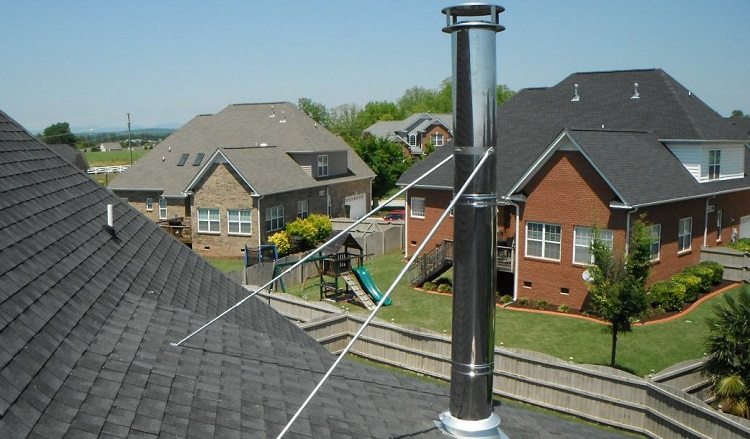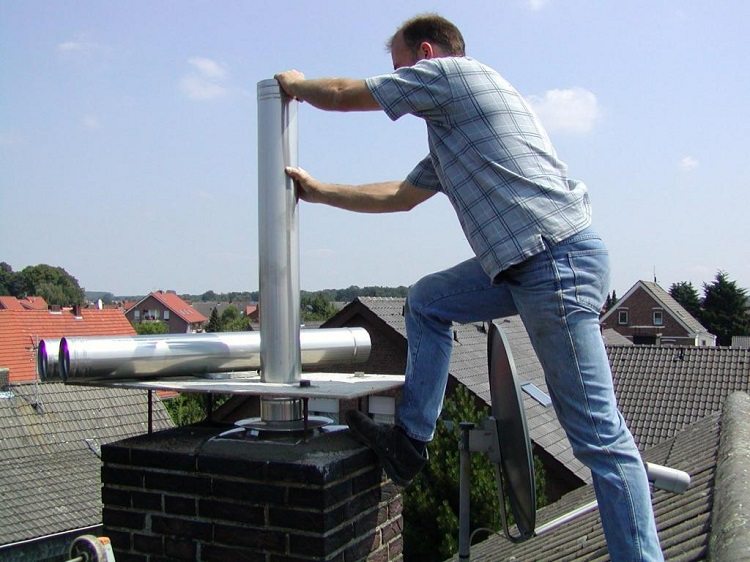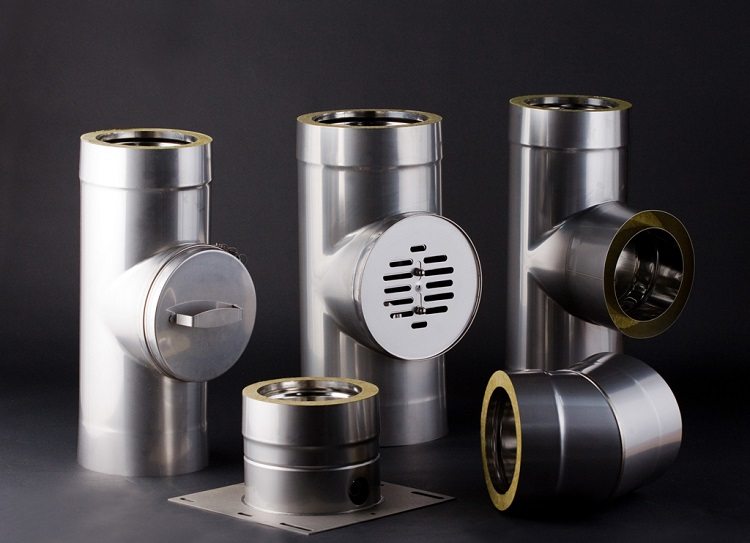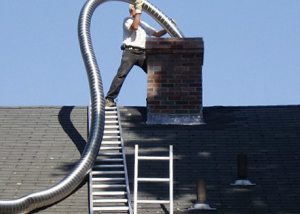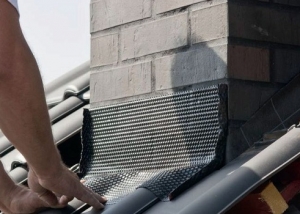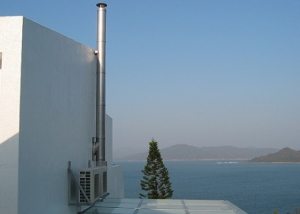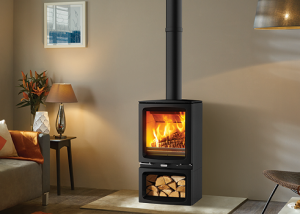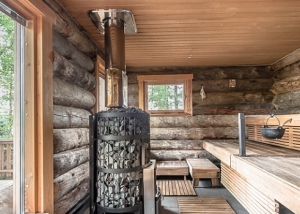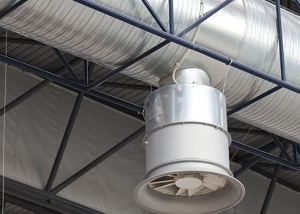The first and foremost requirement for a chimney is safety. To a large extent, this factor depends on the height of the chimney pipe and its location relative to other utilities. In order to protect yourself and your household from the penetration of combustion products into residential premises, you must strictly follow the rules for choosing, installing and using chimneys.
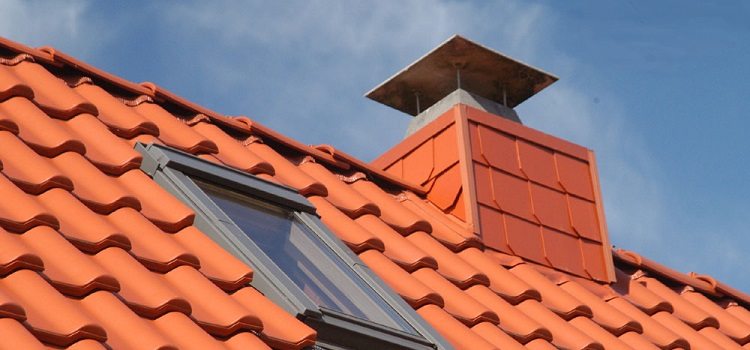
The height of the chimney is an important parameter for the normal functioning of the entire heating system
Content
Basic rules for any type of pipe
There are selection options and installation of chimneys both general for all systems, and specific - for one or another type of pipes, furnaces and boilers. First of all, you need to study the axioms relevant to each chimney.
Among them, the main ones are the following:
- The chimney must not be higher than the adjacent ventilation duct. Otherwise, the combustion products will penetrate the house.
- The height of the chimney of the boiler room must be at least 5 meters. The ideal parameters are 6 meters or more from the grate to the mouth of the furnace (the height of the fly wing is not considered).
- The height of the chimney above the roof of the building should be at least 500 mm. Otherwise, traction may be impaired.
- The internal space of the chimney must comply with fire safety standards: the pipe cross-section must be calculated by a specialist, according to the technical documentation of heating devices and SNIP standards. The parameters of the cross section of the chimney of a square shape should be proportional to the dimensions of the furnace in a ratio of 1: 1.5. (for a fireplace 1:10 of the size of the firebox). The diameter of the pipe for the boiler chimney should not be less than the diameter of the blower.
- If the height of the chimney above the level of the ridge exceeds 1.2 m, it must be strengthened with braces.
Helpful advice! The key parameter is not only the height of the chimney of the boiler room for a private house, but also the type of heating device. For each of them there is an optimal type of pipe. The best aerodynamic properties has a cylindrical chimney. If you need to connect several devices into one chimney channel, it is better to use the industrial version of the pipe.
For the interior decoration of the boiler pipe, it is better not to use clay, as this entails the formation of condensate and a decrease in traction.
Parameters for maximum chimney efficiency
How high should the chimney pipes be in order for the radiators to function at maximum efficiency? The main rule - the higher the pipe, the better the draft and the efficiency of the furnace or boiler.
If the design has a rectangular shape, then the aspect ratio of the section must be maintained 1: 1.5. But the inside angles must be rounded. If the chimney pipe has the shape of a rectangle, its cross-sectional area must not be less than 10 Sq cm. A round pipe cannot be smaller than 15 cm in diameter, and in the case of a chimney pipe -18 cm.
Important! It must be remembered that the height of the chimney above the roof must be clearly calculated with strict regard to fire safety standards.It is unacceptable to place the chimney of the boiler room in the immediate vicinity of windows, doors, too low above the roof, as flying sparks can cause a fire.
On the one hand, the designer of the chimney flue must think that the heating system gives out as much heat as possible to the room, but on the other hand, it is necessary to “leave” the smoke a sufficient temperature so that it “as much as possible” removes all combustion products to the atmosphere, leaving no traces on the walls of the chimney. In this case, the size of the pipe is of great importance, it must be correctly selected. Too high and narrow pipe can lead to increased aerodynamic drag and impaired traction. Too low and wide - to quick cooling of the smoke and the accumulation of condensate on the walls of the chimney. This will lead to rapid soot contamination and, again, traction disturbance.
The minimum height of the chimney is allowed if its edge is located near the ridge. This installation option gives some advantage: the main trunk of the structure passes through the attic space and will be less subjected to cooling, which reduces the likelihood of condensation settling and traction deterioration.
Features of the pipe depending on the type of fuel and material of manufacture
Whatever type of raw material you use (gas, firewood, coal, fuel oil), any of them requires an individual approach to maximize the extraction of “warm” gigacallories, or rather, ensuring an optimal yield of combustion products. The chimney for a private house should provide complete combustion of fuel without its excessive consumption. It must be strong and durable, easy to repair and clean.
Depending on what type of fuel material is used, the type of chimney is selected. For example, if you intend to heat wood, a brick pipe would be the best option for you. The main thing is to choose the right refractory material for masonry and insulation. Arranged in accordance with all the rules, such a chimney perfectly accumulates heat.
However, there are certain disadvantages:
- brick chimneys are heavy and bulky. When they are installed, additional requirements are imposed on the foundation of the building for private houses;
- rough inner surface prone to dirt, often clogged with soot, requires repair and cleaning;
- the use of other types of fuel material or the use of modern heating devices for a boiler room leads to the subsidence of condensate that destroys the chimney;
- short term of operation. As practice shows, destructive processes in the chimney begin to occur after 2-5 years of operation.
Modular stainless steel chimney and other pipe options
Steel chimneys for the boiler room are made of high quality steel by welding in an inert environment. Such chimneys have a structure called "sandwich". Inside the chimney is made of steel of a special composition, then a layer of heat-insulating material is located, and a protective layer of lower-quality metal is installed on top (galvanized or stainless steel is mainly used).
It's important to know! In the manufacture of such chimneys for home use Aisi steel. This is an austenitic alloy of the three hundredth series, it has a high level of acid resistance. In contrast to this type of steel, the material of the four hundred series is less resistant to the negative effects of aggressive chemicals.
However, the installation of such a design is complicated. Self-installation of his house can lead to unpleasant and even tragic consequences.
The ceramic chimney for a private cottage consists of three refractory layers. It has a guarantee for 30 years, but for the price and complexity of the arrangement it will give odds even to a modular one.It also requires strict observance of all installation rules and all work must be done by a specialist.
In order to save money, some owners of private houses arrange chimneys from improvised means like galvanized or asbestos pipes. The effectiveness and safety of any heater in this situation is extremely doubtful. As a result, the savings when using such a chimney for a home in any case will result in extra financial costs during operation, as well as during repairs.
The installation of the chimney is a difficult job, which must be approached with all responsibility. Before starting installation, you should familiarize yourself with the rules that govern the selection and installation of chimneys. Only with this approach will the heating system be functional and safe.
